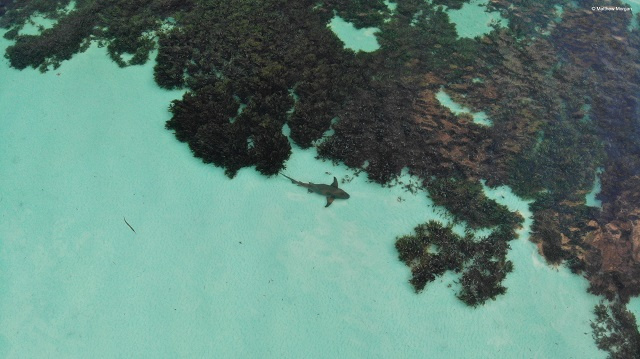Study to examine Seychelles' seagrass meadows, a powerful carbon sink

Seagrass is one of three blue carbon ecosystems, alongside mangroves and saltmarshes. (Mathew Morgan)
(Seychelles News Agency) - A scientist from Oxford University is expected to start a mapping exercise in Seychelles next year in areas containing seagrass meadows as part of a project to collect data on their carbon uptake capacity.
The local consultant for the project, Jeanne Mortimer, told SNA that the "scientist will reach Seychelles in February and will first provide training on how to map areas to those that will be involved in the project."
The mapping exercise will demarcate areas around the most populated island of Mahe, Praslin and La Digue containing seagrass meadows. It will later cover other islands including Desroches, Amirantes, Cosmoledo, Astove, Alphonse and Farquhar.
The project costs around $1 million and is being spearheaded by the Seychelles Conservation and Climate Adaptation Trust (SeyCCAT).
Seagrass is one of three blue carbon ecosystems, alongside mangroves and saltmarshes. With the ability to capture carbon dioxide up to 50 percent faster than the earth's green carbon ecosystems such as trees, it is one of the earth's most efficient carbon sinks and is a much-needed weapon against climate change.
Mortimer, who has a great passion for the livelihood of sea turtles, said that seagrass meadows play an important role in our ecosystem as it also acts as a food source for sea turtles.
Annike Faure, a representative from SeyCCAT's coastal wetlands and climate change project, said: "The project's aim is to collect data of the carbon sequestration capacity for seagrass in the Seychelles."
Faure said that "under the Paris Climate Agreement, Seychelles has to report a 'Nationally Determined Contribution' regarding carbon emissions every five years. It was only in 2013 that a way of measuring it was developed. Before that, we could not claim it as a nature-based solution and include it in our report."
As well as storing carbon, seagrass is known to protect shores from erosion and maintain ocean water quality. Another equally important benefit of seagrass is that it acts as a nursery habitat for many commercially important species such as rabbitfish.
The principal fisheries scientist of the Seychelles Fishing Authority (SFA), Ameer Ebrahim, said that "rabbitfish have a huge impact on the resilience of the coral reef. This is because rabbitfish have the ability to feed on macroalgae which may smother coral reefs if allowed to flourish."
Ebrahim added that scientist hoped that by quantifying blue carbon "this will give the country a new opportunity for environmental funding at a global level, whilst upholding the Seychelles position as an ocean pioneer, and drawing attention to the potential of seagrass worldwide."





